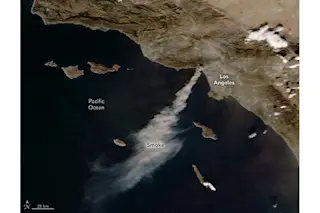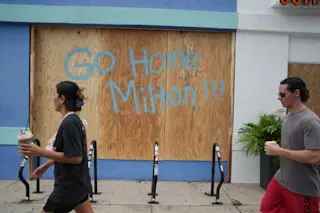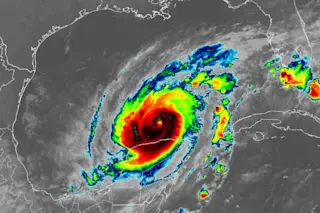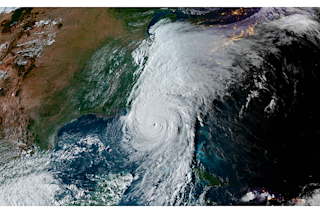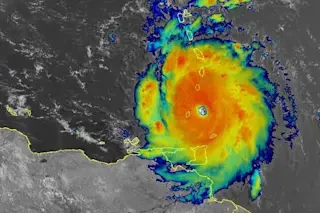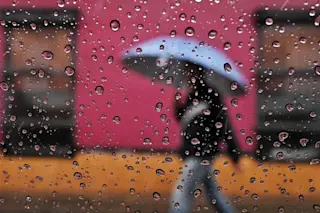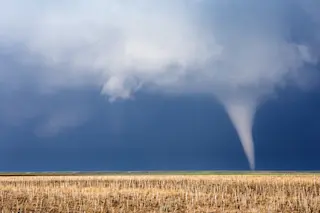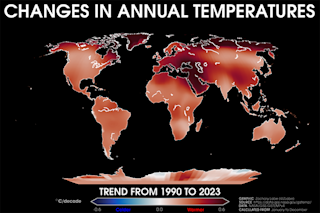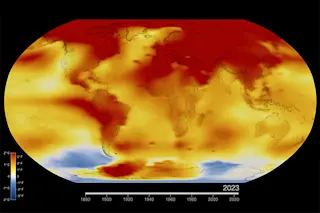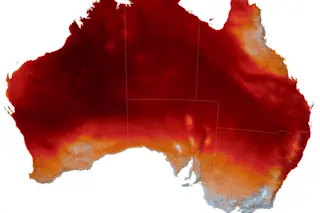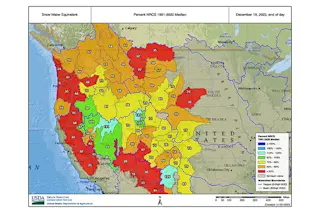By now, the pattern is pretty well established. If there is a famine, drought, catastrophic flood, wildfire, a major hurricane or typhoon, then you can be sure that trailing behind these disasters, like ambulance chasers, is a brigade of climate-concerned activists, scientists and their enablers in the media. And trailing behind them is an Anthony Watts/Marc Morano led brigade of chortling denialists, whose main objective is to exploit, for ideological/political purposes, the exploitation of disasters by the climate ambulance chasers. Much of this plays out like a game of charades. If I say "Somali famine," "Hurricane Sandy" or "Australian bushfires" to the ambulance chasing disaster chasers, they yell: Climate Change! Carbon emissions! Similarly, if I say "climate treaty obstacles" to this same group, they shout: Koch! Fox News! If I say climate science to the Watts/Morano brigade, they screech: Fraud! Hoax! And if I say carbon dioxide to this same group, they blurt out: Photosynthesis! Good! How did we get to this point? Well, the politicized aspect of climate change is well known to those who follow the debate closely. A subset of this politicization is the increasing focus on extreme weather (and disasters). In recent years, we've seen climate advocates and some climate scientists repeatedly point to such events as a manifestation of global warming. A subsequent meme, known as the "new normal" was born, helpfully validated by the media. Last month a PBS post was titled:
The New Climate Normal Coming to a City Near You
I've chronicled this narrative--see here, here, here, and here. So when Typhoon Haiyan recently struck the Philippines, no surprise that the ensuing humanitarian disaster was characterized as the "new normal" in some quarters. And that science journalists from Nature and Time magazine (and elsewhere) quickly penned stories examining the climate change context for the devastating typhoon. A recurring theme of such coverage is embodied in the subheading of the Timepiece by Bryan Walsh:
While scientists can't yet find a clear signal between global warming and killer tropical storms like Haiyan, the supertyphoon could well be a sign of what's to come in a warmer world.
There is a new kind of climate research that may soon be able to better delineate linkages between global warming and severe weather events. This field (known as "attribution" science) is already starting to yield some tentative results. But it's also "risky territory," as Science magazine's Richard Kerr wrote in a related feature story last week. He added:
There is no question that global warming is real, but the science linking any one hurricane, drought, or flood to climate change is shaky, at best.
Science journalists and climate scientists know this, and yet there is an inevitable torrent of climate related stories in the aftermath of every severe weather event, parsing all the permutations and possibilities that suggest climate change may somehow have played a role. As the old saying goes, How many angels can dance on the head of a pin? In the case of climate change and severe weather, an editorial this past summer in the journal Nature Climate Change offered this advice (my emphasis):
Weather is often at the forefront of the general public's mind, influencing their thoughts on climate change. But such anthropogenic effects cannot be considered in the short term. They are expected to manifest as changing patterns outside the normal range of variability, such as that associated with long-term natural climate cycles, and an increase in the frequency and intensity of extreme weather events. But attributing individual events, or even runs of such events, to climate change is ill advised without a deep understanding of underlying physical causes and an appreciation of the statistical probability of these events given long-term natural variability.
Good luck with that! The new normal in various quarters is to assume that global warming contributes to every extreme weather event and that any discussion of such events should include a climate change context. When the public internalizes this new normal and eventually tunes out, at least the finger-wagging climate denialist brigade will be there to take the blame.


